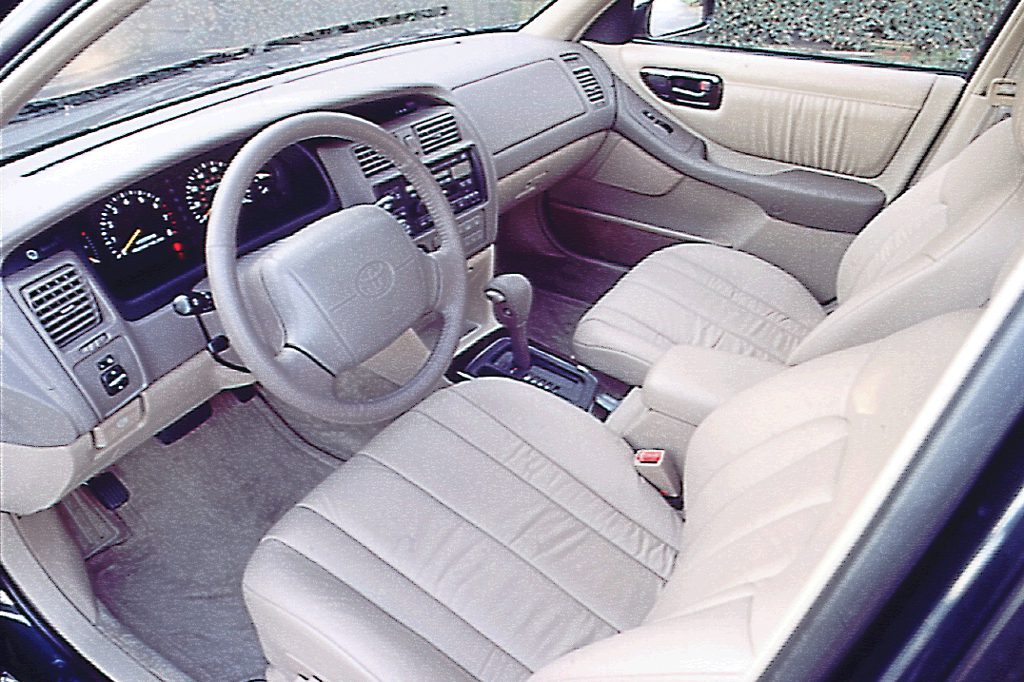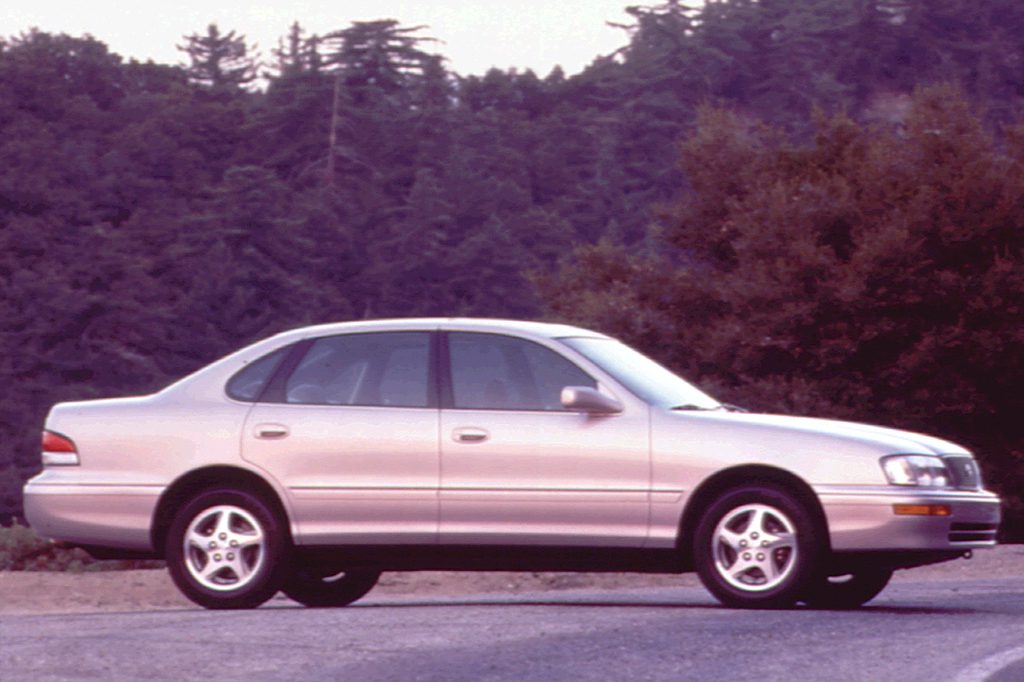| Large car; Built in USA |
|
|
| Good condition price range: $1,400 – $4,100* |

1995 Toyota Avalon XLS

1995 Toyota Avalon XL

1995 Toyota Avalon interior w/bucket seats

1995 Toyota Avalon interior w/bench seat

1997 Toyota Avalon XLS
| Pros: |
|
| Cons: |
|
Roomy and competent, but markedly more costly than a Camry when new, Avalon might offer little excitement, but the sedan also suffers few faults. We’ve been impressed with the solid feel, good workmanship, and low noise levels.
Overview
Built on an extended version of the compact, front-drive Camry platform, Avalon was the roomiest Japanese-brand sedan ever sold in the U.S. Interior volume of 120.9 cubic feet, however, ranked as full-size. Two versions were offered, Base XL and upscale XLS. Both use the dual-cam 3.0-liter V6 and 4-speed automatic from the Camry. However, horsepower was up by four, to 192. Dual airbags were standard and antilock brakes optional. Both models came standard with air conditioning, an AM/FM cassette stereo, tilt steering wheel, and power windows and door locks. Buyers had a choice of standard front bucket seats or a 3-place power front bench.
Yearly Updates
| 1996 Avalon Virtually unchanged in its second season, the Avalon continued its assault on the American family-sedan market. |
| 1997 Avalon Engine output got a boost to 200 horsepower in ’97, and Avalons displayed a few minor appearance changes. An in-glass rear-window antenna replaced the power mast-type aerial, and heated outside mirrors became standard in the XLS sedan. |
| 1998 Avalon Front-seat-mounted side airbags were made standard in Avalon’s only change for ’98. |
| 1999 Avalon Toyota’s flagship got standard daytime running lights and heated exterior mirrors for ’99. An all-new model would arrive in 2000. |
